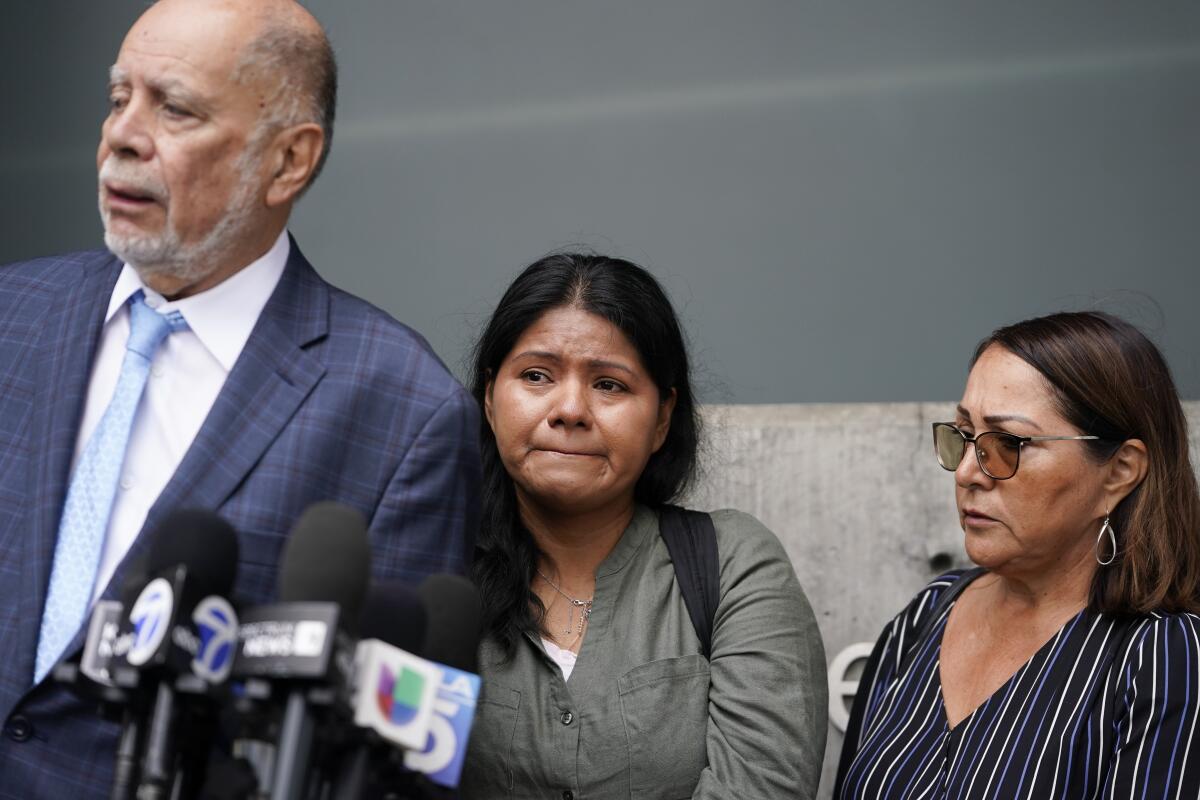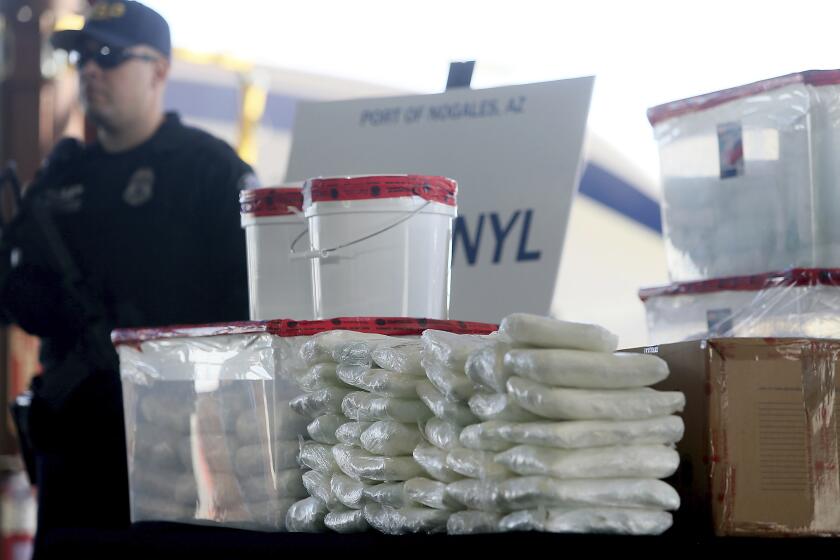‘Just say no’ can kill kids. Teach them how to stay safe in the fentanyl era

- Share via
Melanie Ramos was only 15 years old when she died of a suspected overdose in a high school bathroom in Hollywood. Police reported that she and a friend had purchased pills they thought were prescription painkillers but which were likely fakes containing fentanyl, a potent opioid incorporated into counterfeit pills widely available in the illicit drug market.
Fentanyl has caused such overdoses to rise sharply despite declining drug use among young people. Recent data suggest it kills an average of 22 teens every week around the nation. Tragic stories like Melanie’s are playing out across the country — and at an unprecedented rate. In a new analysis in the New England Journal of Medicine, we found that fatal overdoses among U.S. teens aged 14-18 hit an all-time high in 2022.
A new report blames fentanyl for more fatal overdoses in L.A. County than methamphetamine for the first time in recent years. The opioid’s victims are disproportionately Black.
Melanie was one of 111 teens who died between 2020 and 2022 in L.A. County, a hot spot where overdoses have spiked. We found hot spot counties across the U.S., but Southern California was uniquely hard hit. Of the 19 such counties we identified nationwide, six were in this region: Los Angeles, Orange (61 deaths), San Bernardino (55), Riverside (41), San Diego (36) and Kern (30).
There are signs that teen overdoses in California dropped from 2021 to 2022, but this trend is still new, and hot spots can still occur anywhere — often unexpectedly. Every corner of America should be prepared.
Overdose deaths are preventable. However, reducing teen overdoses requires a dramatic shift in drug-prevention programming: It needs to emphasize safety rather than abstinence alone.
Drug use by teens is becoming more deadly, not more common. From 2002 to 2022, the share of high school seniors who had ever used illicit drugs declined from 21% to 8%. Teen drug use overall is at its lowest rate in decades. But fentanyl, which is found not only in counterfeit pills but also as a contaminant in other drugs, puts teens at unprecedented risk. Nearly two-thirds of teens who die from fentanyl have no known prior opioid use, a reminder that even first-time or infrequent exposure can be deadly.
Fentanyl deaths among teens more than doubled from 2019 to 2020, increasing from 253 to 680. Last year, the number jumped to 884, according to a report from the Journal of the American Medical Assn.
Drug prevention has long focused on keeping teens from trying drugs, which is a worthy goal. But it has lacked messaging for teens who do use and may end up in danger as a result. Teachers, parents, medical practitioners and others who provide drug prevention counseling should clearly communicate that any pill not prescribed by a physician or dispensed by a pharmacy has a significant chance of being a counterfeit containing a potentially lethal amount of fentanyl.
This does not mean using scare tactics, which have been shown to backfire. As modeled by programs such as Safety First, available through Stanford, this approach should instead tap into teens’ desire to keep themselves and their peers safe and give them strategies to do so.
These strategies include never using alone (so someone is available to intervene in an overdose), starting with a small amount of a drug (e.g., a quarter pill rather than a whole pill) to assess its potency, and avoiding mixing pills with alcohol and other sedating substances.
Programming should also help teens recognize the signs of an overdose and teach them how to respond — by calling 911 and providing the nasal spray naloxone (Narcan) if it’s available. Schools should have naloxone on the premises — as has been the case in the L.A. Unified School District since late 2022, following Melanie Ramos’ death — and help teens understand how to access it on and off campus. Narcan recently became available over the counter, and teens can obtain it at pharmacies or get a doctor’s prescription for it.
A survey finds that families aren’t talking about the dangers of fentanyl because they don’t know a lot about it. Here’s how to start the conversation at home.
Teens who seek out pills to address depression, anxiety, trauma or other mental health concerns additionally need referrals to evidence-based mental health treatment such as counseling and, when appropriate, medications — which should be distinguished from the counterfeit pills widely available on the illicit market.
There are some young people who might intentionally seek fentanyl, including the 1 in every 100 U.S. teens who has an opioid addiction. Keeping these adolescents safe requires educating them and their peers on how to recognize signs of addiction, where to receive care and the effectiveness of buprenorphine, a lifesaving but underused treatment for opioid misuse. Given the urgent need to intervene early, schools, families and doctors should be aware of local treatment programs and refer teens to them; the federal government maintains a searchable directory.
Emphasizing safety in drug use messaging to young people will encounter opposition from policymakers and others, as it means confronting the uncomfortable reality that some teens use drugs. However, research indicates that teaching safety does not cause teens to use more drugs. Drug-prevention programming can still tell teens they shouldn’t use substances while equipping them with the tools to protect themselves if they do. Teens need this knowledge before more young lives are tragically lost.
Scott Hadland (@DrScottHadland) is the chief of adolescent medicine at Mass General for Children and an associate professor of pediatrics at Harvard Medical School. Joseph Friedman (@JosephRFriedman) is a substance-use researcher at UCLA.
More to Read
A cure for the common opinion
Get thought-provoking perspectives with our weekly newsletter.
You may occasionally receive promotional content from the Los Angeles Times.












